
- •Course of lectures «Contemporary Physics: Part1»
- •Potential Difference and Electric
- •Potential Difference and Electric
- •Potential Difference and Electric
- •Potential Differences in a Uniform
- •Potential Differences in a Uniform
- •Potential Differences in a Uniform
- •Potential Differences in a Uniform
- •Electric Potential and Potential Energy Due to Point Charges
- •Electric Potential and Potential Energy Due to Point Charges
- •Electric Potential and Potential Energy Due to Point Charges
- •Electric Potential and Potential Energy Due to Point Charges
- •Obtainingthe Value of the Electric Field from the Electric Potential
- •Obtainingthe Value of the Electric Field from the Electric Potential
- •Obtainingthe Value of the Electric Field from the Electric Potential
- •Electric Potential Due to Continuous
- •ElectricPotential Due to a Charged Conductor
- •ElectricPotential Due to a Charged Conductor
- •ElectricPotential Due to a Charged Conductor
- •A Cavity Within a Conductor
- •The Millikan Oil-Drop Experiment
- •The Millikan Oil-Drop Experiment
- •Applications of Electrostatics
- •The Electrostatic Precipitator
- •Xerography and Laser Printers
- •Definition of Capacitance
- •Definition of Capacitance
- •Calculating Capacitance
- •Combinations of Capacitors
- •Parallel Combination
- •Parallel Combination
- •Series Combination The charges on capacitors connected in series are the same.
- •Series Combination
- •Energy Stored in a Charged Capacitor
- •Energy Stored in a Charged Capacitor
- •Capacitors with Dielectrics
- •Capacitors with Dielectrics
- •Electric Dipole in an Electric Field
- •Electric Dipole in an Electric Field
- •Electric Dipole in an Electric Field
- •Electric Dipole in an Electric Field
- •Home work:
- •Quick Quiz 12.5
- •Quick Quiz 12.6

Course of lectures  «Contemporary Physics: Part1»
«Contemporary Physics: Part1»
Lecture №11
Electric Potential.
Capacitance and Dielectrics.

Potential Difference and Electric
Potential
(12.1)
This line integral does not depend on the path taken from A to B.
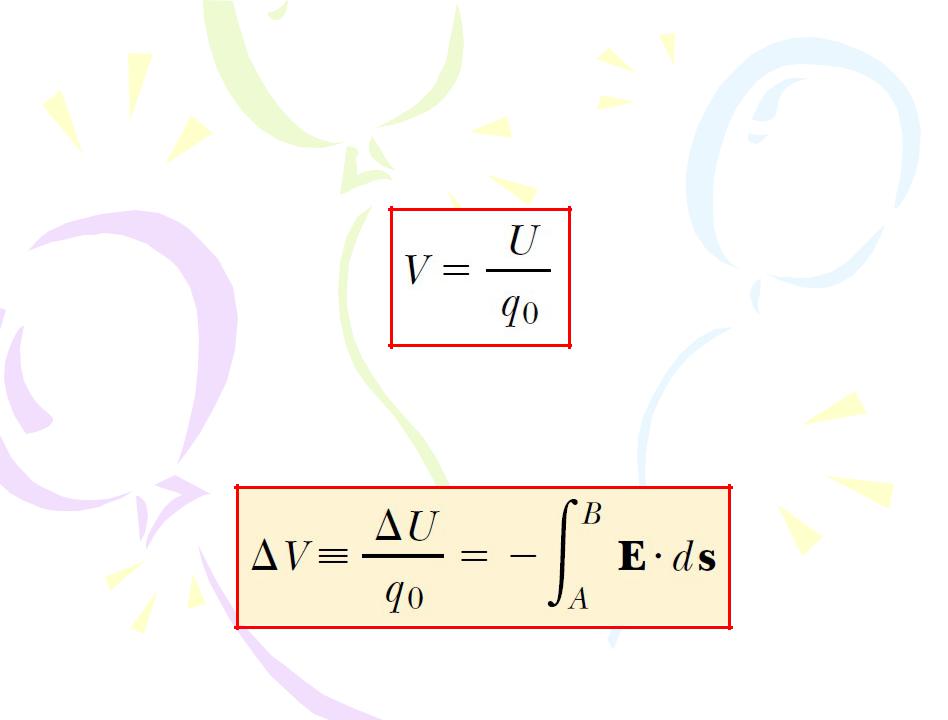
Potential Difference and Electric
Potential
The quantity U/q0 is called the electric potential (or simply the
potential) V. Thus, the electric potential at any point in an electric field is
(12.2) 
The potential difference ∆V = VB - VA between two points A and B
in an electric field is defined as the change in potential energy of the system when a test charge is moved between the points divided by the test charge q0:
(12.3)
Electric potential is a scalar characteristic of an electric field, independent of any charges that may be placed in the field.
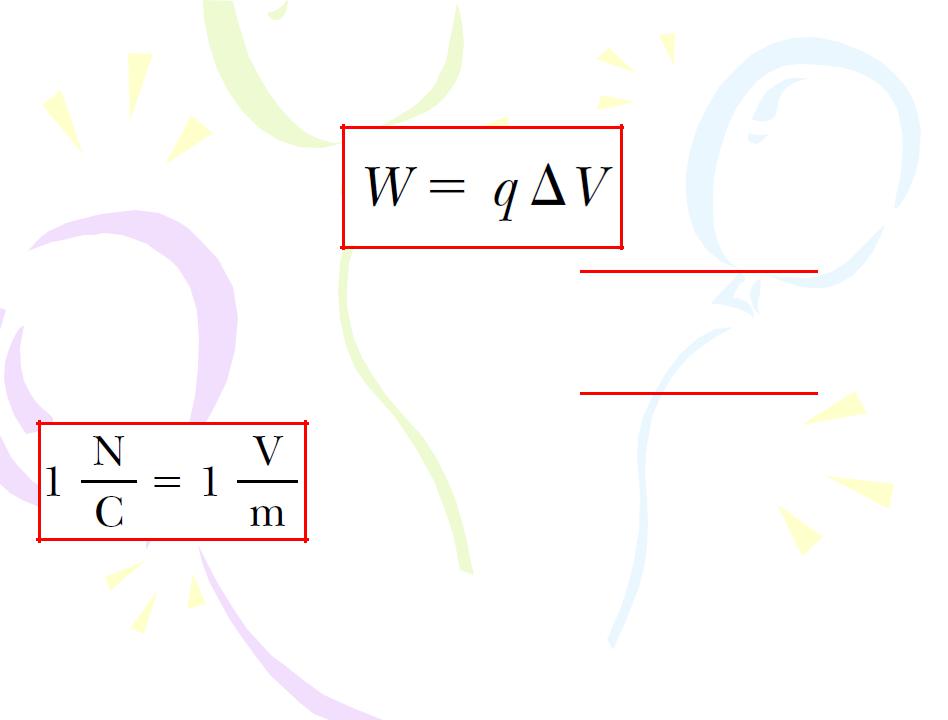
Potential Difference and Electric
Potential
The SI unit of both electric potential and potential difference is joules per coulomb, which is defined as a volt (V):
(12.4)

 (12.5)
(12.5)
We can interpret the electric field as a measure of the rate of change with position of
the electric potential.
A unit of energy commonly used in atomic and nuclear physics is the electron volt (eV), which is defined as the energy a charge–field system gains or loses when a charge of magnitude e (that is, an electron or a proton) is moved through a potential difference of 1 V.

Potential Differences in a Uniform
Electric Field
Let us calculate the potential difference between two points A and B separated by a distance |s|=d, where s is parallel to the field lines.
(12.6)

Potential Differences in a Uniform
Electric Field
Electric field lines always point in the direction of decreasing electric potential.
Now suppose that a test charge q0 moves from A to
B. We can calculate the change in the potential energy of the charge–field system:

 (12.7)
(12.7)
We conclude that a system consisting of a positive charge and an electric field loses electric potential energy when the charge moves in the direction of the field.
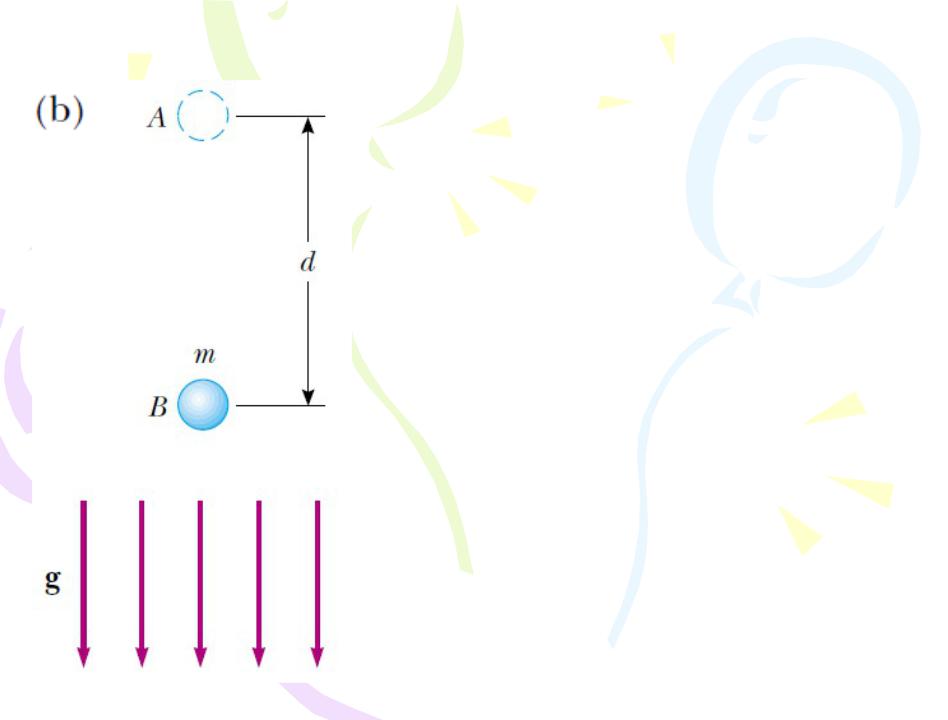
Potential Differences in a Uniform
Electric Field
 As the charged particle gains kinetic energy, the charge–field system loses an equal amount of potential energy.
As the charged particle gains kinetic energy, the charge–field system loses an equal amount of potential energy.
A system consisting of a negative charge and an electric field gains electric potential energy when the charge moves in the direction of the field.
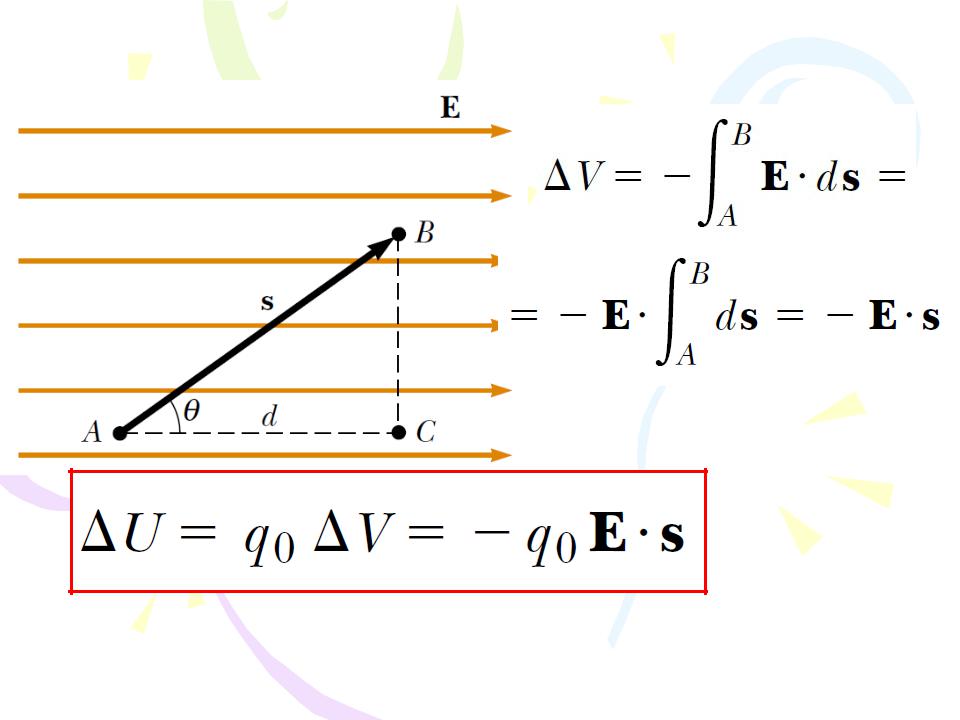
Potential Differences in a Uniform
Electric Field
(12.8)
(12.9)
The name equipotential surface is given to any surface consisting of a continuous distribution of points having the same electric potential.

Electric Potential and Potential Energy  Due to Point Charges
Due to Point Charges
(12.10)
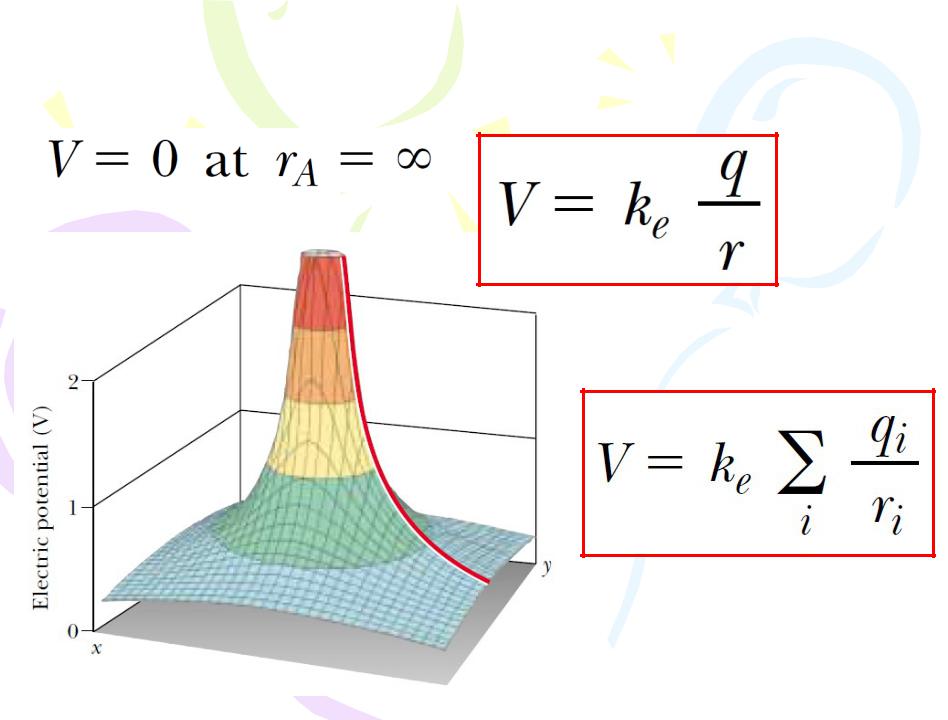
Electric Potential and Potential Energy  Due to Point Charges
Due to Point Charges
(12.11)
(12.12)
